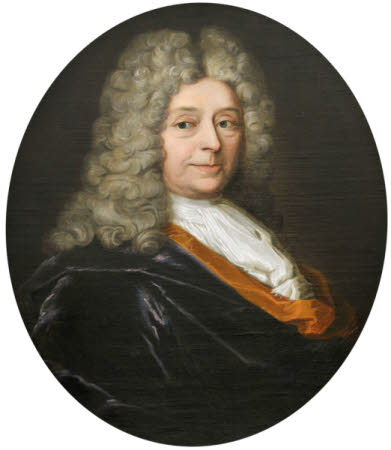Reverend and Rt Hon. Richard Hill of Hawkstone (1654-1727)
British (English) School
Category
Art / Oil paintings
Date
circa 1725
Materials
Oil on canvas (oval)
Measurements
762 x 635 mm (30 x 25 in)
Place of origin
England
Order this imageCollection
Tatton Park, Cheshire
NT 1298213
Summary
Oil painting on canvas (oval), Reverend and Rt Hon. Richard Hill of Hawkstone (1654-1727) by an artist of the British (English) School. circa 1725. A bust-length portrait, facing right, wearing a long grey wig. Revd Richard Hill of Hawkstone (1654-1727), second son of Rowland Hill of Hawkstone (d.1700) and Margaret Whitehall. He inherited and acquired considerable property, a great part of which he devised to his nephews, Samuel Barbour (later of Shenstone) and Thomas Harwood (father of the 1st Lord Berwick), both of whom assumed the name of Hill. The Hawkstone property passed to another newhew Rowland, created a baronet in 1727.He was a statesman and diplomatist during the reigns of William, Anne and George. Whilst acting as tutor to Lord Hyde, eldest son of 1ts Earl of Rochester, he attracted the attention of Lord Ranelagh, William III’s Paymaster-General to the Forces, who made him his deputy in Flanders (1691-96), a post, in view of the paymaster’s defalcations, which may have harmed his reputation. In 1691 he bought Atcham and conveyed it to his sister Margaret, mother of Thomas Hill. In 1696 he was appointed Envoy Extraordinary to the Governor of the Spanish Netherlands, Max Emanuel of Bavaria (cf. the portrait of the latter as Governor of Namur given by Miss Wigram in 1990 – ATT.P.240), and in 1699 succeeded Joseph Williamson as Ambassador to the Hague, also going on a secret mission to Turin. At the end of the year he was appointed a lord of the Treasury. In 1702 he was made one of the Council of the Lord High Admiral, Prince George of Denmark, and from 1703-06 he was envoy extraordinary and plenipotentiary to the Hague, but was prevented from taking up the post by ill health. He retired to Richmond, and is reputed to have resumed the clerical orders that he put aside when embarking on his career, but to have refused a bishopric. He was buried at Hodnet, under a lavish monument with a Latin inscription detailing his public career, that he appears to have erected in his own lifetime, in 1726. Though a Tory, Hill admired William III’s foreign policy and supported the Hanoverian succession. Mackey said of him: “He is a gentleman of very clear parts, and affects plainness and simplicity in his dress and conversation specially. He is a favourite to both parties and is beloved for his early access and affable way by those he has business to do with.” He was a Fellow of the Royal Society [D.N.B.] The use of ‘Right Honble’ suggests membership of the Privy Council, but t5he DNB specifically denies that he was so admitted, and his tomb inscription makes no mention of it.
Provenance
Bequeathed by Maurice Egerton, 4th Baron Egerton of Tatton (1874 - 1958) to the National Trust with the house, gardens and contents of Tatton Park
Makers and roles
British (English) School

